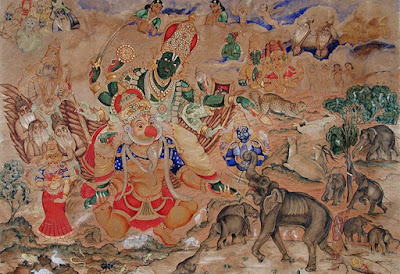K. G. Subramanyan
K.G. Subramanyam
* कला एक संसार नहीं लेकिन यदि हमें संसार को समझना है तो कला हमें तैयार करती है...
* ‘I am a restless soul’
* “To stoop down and kiss the earth.
Between the skyward sprouts
And the leaves that fall to earth
Revolves the endless tale
Of birth and life and death.”
K. G. Subramanyan was born in 1924 in Kuthuparambain Kerala, India, and studied economics at Presidency College, Madras. The turning point of his life as an artist came when he visited Santiniketan to study at Kala Bhavan, the art faculty of Visva Bharati University in 1944 under the guidance of Nandalal Bose, Benode Behari Mukherjee, and Ramkinkar Baij.
K.G. Subramanyan was greatly influenced by folk art from Kerala, Kalighat painting, and Pattachitra from Bengal and Odisha, as well as Indian court paintings.
His visual language combines a variety of elements like art principles of European Modernism and folk expression. He is known as a painter, muralist, sculptor, printmaker, set designer, and toymaker. Subramanyan’s works from the late, 40s reflect the influence of his teachers at Santiniketan. Subrahmanyan reverted to small-scale works on acrylic sheets revisiting his favorite themes of brilliantly colored interiors, domestic animals, and brazen women. To this, he has added Christian mythology and contemporary politics.
Subramanyan’s prominent black line recalls Pablo Picasso and F. N. Souza but only serves, in his case, to differentiate his figures from the surface of the work, the volume from the plane. Known for the sensuality of his imagery and figures, the nightly backdrops, and the reflective faces, Subramanyan’s paintings reveal a continued cubist influence. A revered teacher and theoretician, Subrahmanyan is a well-known fiction writer and poet and has written extensively on art.
Subrahmanyan resided in Baroda, with his daughter Uma, towards the later days of his life and it was here that he died on 29 June 2016.
He has received the Kalidas Samman in 1981, the Padma Shri in 1975, and the Padma Vibhushan in 2012.








Comments
Post a Comment